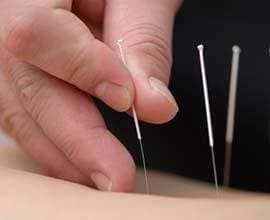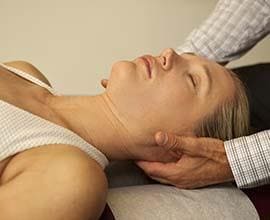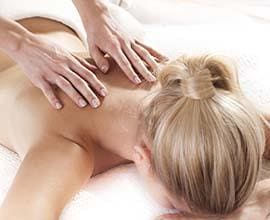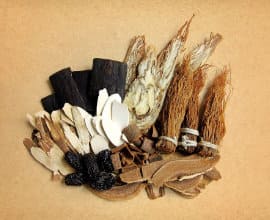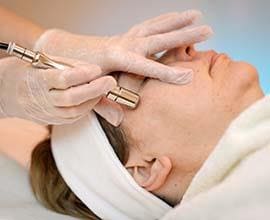What is the best treatment for cellulite?
Cellulite is an incredibly common concern for most women, with over 85% of women having cellulite on thighs, bottom or on their stomach. If you're one of those women looking for the best treatment for cellulite, you may have heard of a range of treatments that can help reduce the appearance of cellulite. We're going to look at which type of treatment is the most effective for banishing those dreaded lumps and bumps.
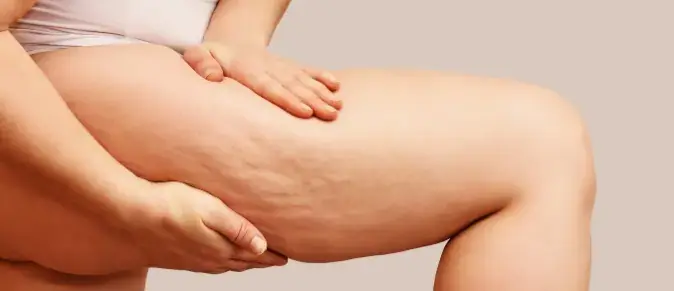
What is cellulite?
Cellulite is a condition that affects many people and is characterised by a dimpling effect on the skin. It typically appears in the stomach, hips, buttocks and thighs and is quite common among women. It can be caused by a combination of factors such as age, genetics, diet and lifestyle and is not necessarily a sign of an unhealthy lifestyle.
Cellulite is a type of fat found underneath the surface of the skin. It is most commonly found around the buttocks, thighs and stomach in areas which can have limited circulation. It causes the skin to appear bumpy and dimpled due to the fat cells pushing against the fibrous bands that separate the fat cells, causing the skin to bunch up and give the appearance of cottage cheese. It is most common in women due to hormones and can be difficult to remove once it has formed, although there are a number of treatments available that can help reduce its appearance.
Although cellulite is not a life threatening condition, it can have a massive effect on a person's self esteem and confidence.There are a number of treatments available to reduce the appearance of cellulite, from creams and gels to lifestyle changes and more intense treatments. However, the best treatment for cellulite is often a combination of treatments that best suit your needs and lifestyle.
Causes of Cellulite
The cause of cellulite lies in the dysfunctional interaction of unhealthy diet, lack of physical exercise and hormone imbalances.
Unhealthy Diet
Unhealthy dietary choices, such as consuming too many processed and refined foods, can significantly increase the risk of forming cellulite.
Lack of Exercise
Not engaging in regular physical activity can result in an increase in body weight, which is a notable factor in the development of visible cellulite. This is due to the body becoming less toned, meaning the muscles underneath the skin are weaker, which causes the skin to appear dimpled.
Hormonal Imbalance
Hormonal imbalances caused by either lifestyle choices, or genetic predisposition, can cause the release of certain fatty acids which can accumulate in the body, making cellulite more visible on the skin.
Fluid Retention
Fluid retention is believed to be a major factor in the development of cellulite, as it causes the skin to become dimpled due to the underlying fat and connective tissue becoming more visible.
Genetic Factors
Genetic factors, such as skin thickness, the structure of the connective tissues in affected areas, hormone levels and the distribution of fat cells all contribute to cellulite formation.
Being Overweight
Unfortunately, cellulite is a common problem and is predominantly seen in women, especially those who are overweight or have been overweight in the past. It is caused when fat cells beneath the skin push up against the connective tissue. Being overweight is the most common cause of the lumps and bumps; excess fat can be awkward to get rid of, and in turn, it can become trapped beneath the skin resulting in the formation of cellulite.
Lack of Circulation
A factor for cellulite in both men and women is a lack of circulation. In women, this lack of circulation is combined with a decrease in hormones like oestrogen and progesterone, which can lead to an abnormal build-up of fat in areas such as the buttocks and thighs. In men, cellulite typically appears due to an imbalance in muscles and fat, or it can be caused by age related issues. Couple this with a lack of circulation and you have the perfect recipe for cellulite.
Best Cellulite Treatments and Remedies: What Really Works for Cellulite Reduction?

#1 Eat Healthy & Drink Lots of Water
Staying hydrated is crucial for overall skin health, and it can also help reduce the visibility of cellulite. Drinking an adequate amount of water throughout the day supports healthy skin and prevents water retention. Additionally, maintaining a balanced diet rich in fruits, vegetables, whole grains and lean proteins can improve skin texture and reduce cellulite's appearance.
#2 Regular Exercise
Regular exercise, especially body weight exercises and strength training using site-specific exercises, can help tone and firm the muscles beneath the skin. Strengthening the underlying muscles can lead to smoother skin and reduce the appearance of cellulite.
#3 Massage Treatment
A massage treatment can help improve the skin's health and elasticity, as well as reduce inflammation and improve the overall texture of the skin. Massage therapy helps to break down fatty deposits, promotes the production of natural oils and increases blood circulation. Regular massage treatments help to reduce the appearance of cellulite over time.
#4 Collagen & Retinol
Collagen is a structuring protein significant in keeping skin flexibility and firmness. As we age, collagen production lessens, producing skin slackness and the emergence of dimpled skin. Taking collagen supplements may help promote the body's collagen production and enhance skin texture. In fact, It has been proven that consuming 2.5 grams of bioactive collagen peptides (BCP) produces a clear improvement!
Retinol is a type of Vitamin A which can help reduce the appearance of cellulite by increasing collagen production and improving skin texture and elasticity. It can also help to speed up the metabolism of fat cells, making them less noticeable.
#4 Dry Skin Brushing
Dry brushing involves using a natural bristle brush to massage the skin in circular motions. This can stimulate lymphatic drainage, boost blood circulation, and help remove toxins from the body. Regular dry brushing can lead to better skin texture and reduce the look of cellulite over time.
#5 Endermologie
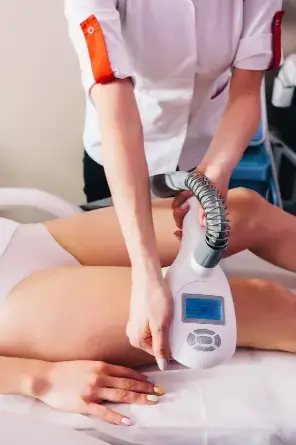
Endermologie makes changes to the cellulite cells via stretching of connective tissue, an increase of blood and lymphatic flow, skin exfoliation, stimulation of collagen production and helps with fat metabolism.
#6 Supplements
Popular supplements for cellulite include green tea extract containing antioxidants, fat burning agents such as caffeine, vitamin C to support collagen production and Omega-3 for its anti inflammatory properties which may improve skin health and texture by reducing the appearance of cellulite. Taking specific supplements regularly over a prolonged period of time can help to reduce the appearance of cellulite, creating a smoother, more toned look.
Summary: What is the Best Cellulite Treatment?
In conclusion, the best treatment for cellulite isn't one single approach, but a tailored programme with a variety of methods. No one approach works for all, so it's essential to utilise a variety of methods to make a personalised plan to reduce the appearance of cellulite and enhance skin texture.
Our therapists can create a holistic approach, utilising all of our treatments available, to form a bespoke treatment plan to help achieve an improvement in cellulite.
To arrange a consultation with our therapists, call our friendly team on 07 3857 8887 or complete our online enquiry form.
Search Help Section by Service
Search our information section by a specific service. Simply click the tile below.

